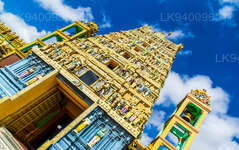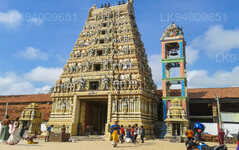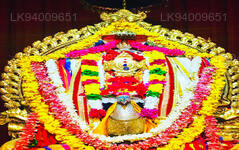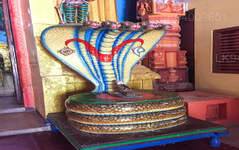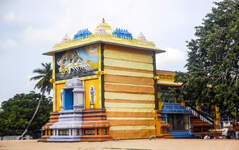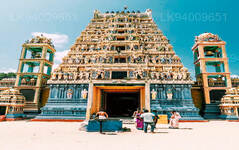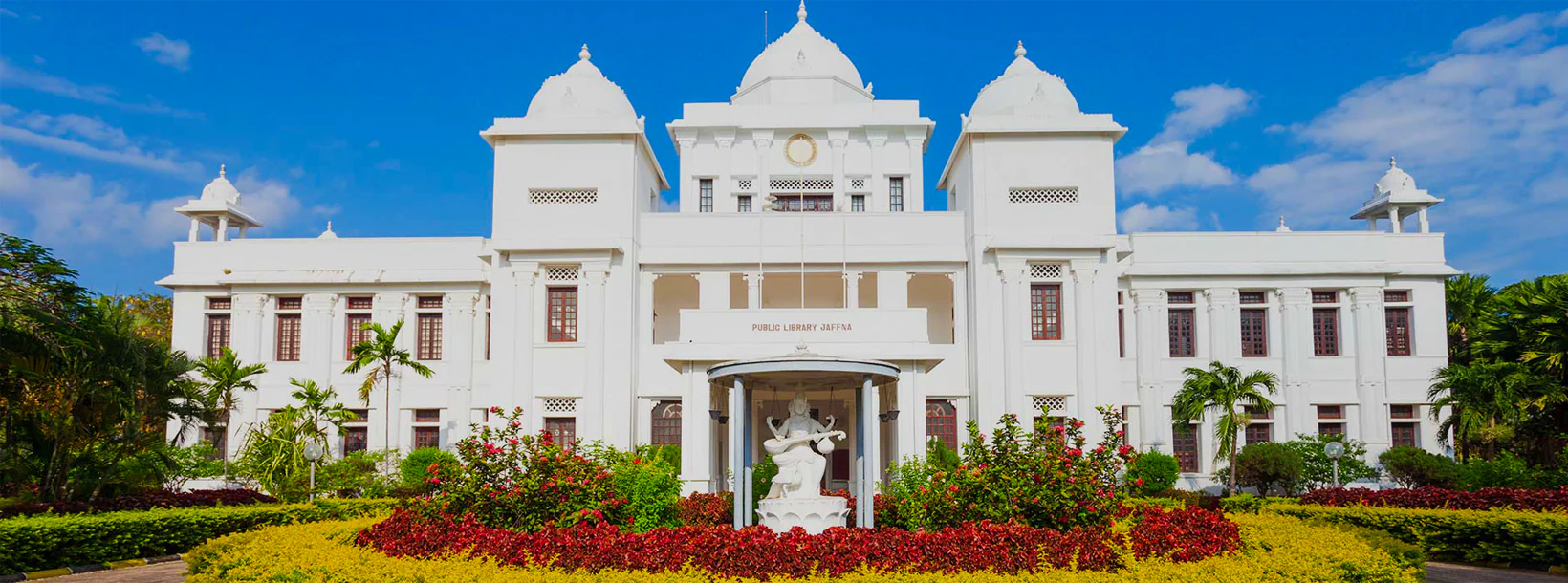
Jaffna City
Jaffna is the main city of Jaffna peninsula in the northernmost district of Sri Lanka. Comfortable intercity busses from Colombo take 10-12 hours to reach the city of Jaffna.
Vallipuram
The Vishnu temple Vallipuram is one of the oldest temples in Jaffna. The temple attracts worshippers daily, on Sundays in particular. Situated amidst a vast expanse of sand dunes, it is difficult to imagine that the area was once a capital city of the Jaffna region. Sir Paul. E Pieris, who also discovered Kadurugoda, made important discoveries here, which have subsequently been identified as belonging to the period of the first Lambakarna King, Vasaba (65 – 109 AC). An inscription on a gold plate records the words “Hail in the reign of the great king, Vasaba and when the Minister Isigirayan was governing Nakadiva, Piyagutikatissa caused a Vihara (temple) to be built at Badakara Atana”. The origin of this temple, like most, is founded in legend. The story says that Lavalli Ammaiyar, a pious lady, had been afflicted with nagadosham (a curse) and was hence unable to have children. She was advised to go to this place which was sacred to Vishnu and beseech him for the remission of her sins. She performed tapas (prayed) daily with arms outspread facing the sea in the hope that Lord Vishnu would appear before her, arise from the ocean and grant her desire. One day when the fishermen of the village were fishing they cast their net and caught a large fish which leapt into the arms of Lavalli Ammaiyar. As she held it, it turned into the shape of an infant looking like the Lord Vishnu himself. When the infant vanished an old soothsayer who was present gave to the people a Vishnu Cakkaram (a disc, symbol of Vishnu), which they decided to install at this place and venerate in commemoration of the event. In the sanctum, the Vishnu’s Cakkaram (disc) occupies the place of the Utsava Moorthy (deity) which is taken out for processions during festivals. The annual festival is held in August-September.
The place name is “Valli”, or “sand” in Tamil and Sinhala. The Vishnu temple here was constructed around the 13th century. Tamil Buddhists and Hindu cults co-existed with no trouble, even when the rulers did not, and hence a Vaishnava tradition may have existed in early times as well. The deity of the temple is called Vallipura Azhvar. Azhvar names are common in Vaishnavite tradition. This place is the first place of settlement in Sri Lanka. Rest of Sri Lanka was populated from this landing place. Vallipuram (Sandy City) has a recorded history from the 2nd century BC, in the gold inscription, where the local ruler is named as “Azhagiri”, a name confirmed in the Nelugala stone inscription (2nd Century BC). King Vasaba is also thought to be mentioned. The Buddhist list of holy places (“Nampotha”) names it as “Vallipuram” or sand city. The exact details of the temple complex are not known, and the famous `Vallipuram” Buddha statue built with Dravidian A sculptural traditions from Amaravati, Andhra Pradesh wa found in excavations below the Hindu Temple. The language of the inscription is Tamil-Prakrit, which shares several similarities with script inscriptions used in Andhra at the time. This cultural exchange between the Jaffna Tamils and Andhra Pradesh occurred at the height of Tamil trade in the Sangam period, continuing when the Telugu Satavahana dynasty was at the height of its power from 230 BCE right through when its 17th monarch Hala (20-24 CE) married a princess from the island. Professor Peter Shalk (University of Uppsala), writes “Vallipuram has very rich archaeological remains that point at an early settlement. It was probably an emporium in the first centuries AD. From already dated stones with which we compare this Vallipuram statue, we can conclude that it falls in the period 3-4 century AD. During that period, the typical Amaravati-Buddha sculpture was developed”. The Buddha statue found here was gifted to King of Thailand by the then British Governor Henry Blake in 1906. The descendants of Arya Chakrawarthi married into Kalinga Magha family and created a dynasty of Singai-Aryans and ruled from Vallipuram and renamed it as Singai Nagar. However, no historically useful objects, e.g., inscriptions, art or literary works were left by these rulers, and Paranavithana and other historians claim that they paid tribute to the main ruler of the co also S. Paranavithana, “Vallipuram Gold-Plate Inscription of the Reign of Vasaba. Epigraphia Zeylanica, 4 (1936) 229-236. A full discussion has been given recently by Karthigesu Indrapala, Evolution of an Ethnic Identity, (2005), and in an earlier work, 1965 where Dr. Indrapala argued for a flourishing pre-Christian Buddhist civilization in Jaffna, in agreement with Paranavithana, and Mudliyar C. Rasanayagam’s Ancient Jaffna.
About Jaffna District
Jaffna is the capital city of the Northern Province, Sri Lanka. 85% of the populations of the Jaffna and Kilinochchi districts are Hindus. The Hindus follow the Saivite tradition. The remainders are largely Roman Catholics or Protestants, some of whom are descendants of colonial settlers, known as Burghers. The Tamils are divided along caste lines, with the farmer-caste Vellalar forming the majority. Sea products, red onion, and tobacco are the main products in Jaffna.
Jaffna is home to beautiful Hindu temples. An Old Dutch Fort still stands well preserved within which is an old Church. Another example of Dutch architecture is the King's House. No visit to Jaffna is complete without tasting the exquisite Jaffna mango, reputed for its sweetness. About 3 km away is the majestic Nallur Kandaswamy Temple, home to the largest religious festival in Jaffna. The Kayts Harbour is an ancient ship docking site in the Jaffna region.
About Northern Province
The Northern Province is one of the 9 provinces of Sri Lanka. The provinces have existed since the 19th century but they didn't have any legal status until 1987 when the 13th Amendment to the 1978 Constitution of Sri Lanka established provincial councils. Between 1988 and 2006 the province was temporarily merged with the Eastern Province to form the North-East Province. The capital of the province is Jaffna.
Northern Province is located in the north of Sri Lanka and is just 22 miles (35 km) from India. The province is surrounded by the Gulf of Mannar and Palk Bay to the west, Palk Strait to the north, the Bay of Bengal to the east and the Eastern, North Central and North Western provinces to the south.The province has a number of lagoons, the largest being Jaffna Lagoon, Nanthi Kadal, Chundikkulam Lagoon, Vadamarachchi Lagoon, Uppu Aru Lagoon, Kokkilai lagoon, Nai Aru Lagoon and Chalai Lagoon.Most of the islands around Sri Lanka are to be found to the west of the Northern Province. The largest islands are: Kayts, Neduntivu, Karaitivu, Pungudutivu and Mandativu.
The Northern Province's population was 1,311,776 in 2007. The majority of the populations are Sri Lankan Tamils, with a minority Sri Lankan Moor and Sinhalese population. Sri Lankan Tamil is the major language spoken in the province by the vast majority of the population. The other language spoken is Sinhala by 1 percent of the population. English is widely spoken and understood in the cities.

